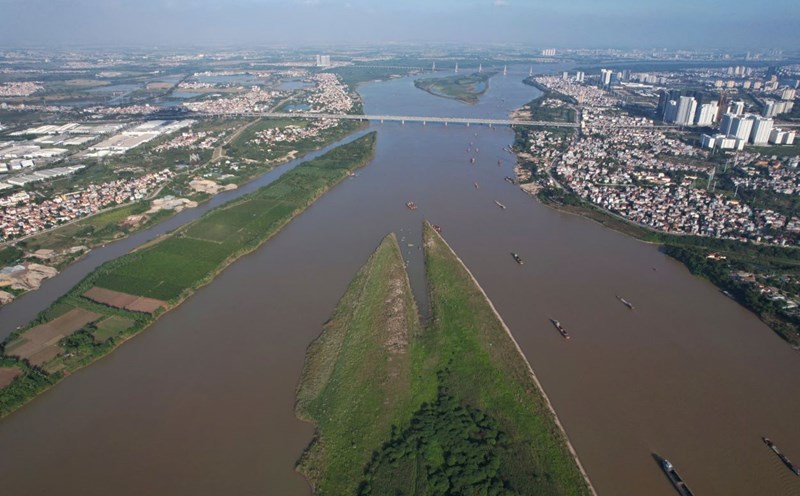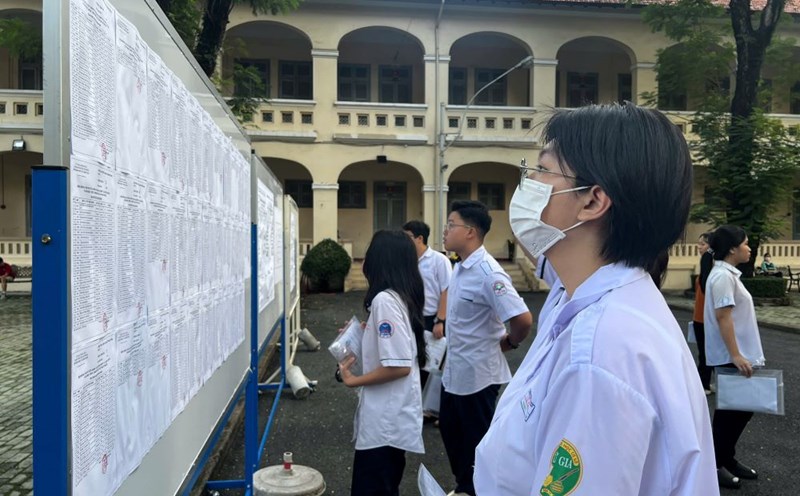THE GENEROUS CHARACTER OF THE MONEY RIVER
The Mekong River enters Vietnam at Vinh Xuong Commune, Tan Chau District, An Giang Province and Thuong Phuoc Commune, Hong Ngu District, Dong Thap Province. Not only is it the natural boundary between these two provinces, the Tien River also flows through the provinces of Tien Giang, Vinh Long, Tra Vinh, Ben Tre and then flows into the East Sea.
The length of Tien River is 234km, very modest compared to Red River (551km) or Da River (543km) but plays an extremely important role in creating the Mekong Delta and the culture and history of the South. The richness and fertility of the Southern land and the generous and chivalrous character of the Southern people are all built up from every drop of alluvium of Tien River and Hau River.
The sacred Mekong River draws water from the sacred Himalayas, creating mysterious rivers that have the power to create brilliant civilizations such as India (with the Indus River, the Ganges River), China (with the Yellow River), and the Mekong (with the Tien River, the Hau River).
These are civilizations that were formed more than 5 thousand years ago and still exist strongly until now, never destroyed or faded. That sacred water of the Mekong gathered in the vast land of the South of Vietnam and then merged into the ocean, then the water of the Mekong evaporated into clouds, then fell into the Himalayas.
Looking at the achievements of the Tien River in the Southern land, we can clearly understand the great power of dedication. The immense water flow is like a great canal that generously provides everything that people need for a prosperous, peaceful and happy life.
The prosperous scene that Tien River creates is often praised in this land as: "Fish and shrimp are abundant in the river, just need to take a basket to scoop. Fruits are heavy all over the garden, just need to raise your hand to pick". But that still only describes a very small part of the prosperity that comes from Tien River.
Receiving the boundless generosity of the Tien River, living forever on the immense river, naturally, the people also adopted the river's character as their own, with characteristics such as generosity, chivalry, and open-mindedness. And then a material and spiritual culture of the Tien and Hau rivers was formed since the Vietnamese people followed the flow to open up new lands.
RACH GAM TIDE - XOAI MUT
There is a characteristic of the urban areas of the Southwest region created by the Tien River. That is, each urban area is 60 km apart and it is closely related to the flow of the Tien River and the Hau River. The reason for this characteristic is the flow of the two major canals, the Tien River and the Hau River.
In this vast river area in the past, there were almost no roads, so transportation relied entirely on the Tien River, Hau River and their tributaries such as the Co Chien River, Ham Luong River, My Tho River, Can Tho River and a system of thousands of canals and ditches.
If we connect the total length of this waterway system together, we get a length that can wrap around the equator twice, about 80,000km. That is why people have to travel by boat to the Mekong Delta according to the rhythm of the water.
The water flow of the Tien River is governed by the influence of tides and the attraction of the moon. Therefore, in one day, the tide changes its flow 4 times, each change lasting 6 hours, including 6 hours of high tide and 6 hours of low tide.
The average flow speed of the Mekong River in the past, when hydroelectric dams had not been built in the upstream countries, was calculated to be about 10km/h, so multiplying by 6 hours gives about 60km. Thus, it can be seen that boats can move with the current 60km per day.
When the water changes its flow, boats will stop at a convenient place to hold a market, trade, rest, and continue on when the tide comes. These resting places gradually become markets, shops, and then settlements, the foundation of later cities.
As mentioned in the previous article on the floating market specialties of the Hau River, looking along the Mekong River's flow through 5 countries, there is no place with the characteristic of urban formation following the water as along the Tien River. Because in those places, they are far from the sea, the impact of tides on the flow is low.
An interesting similarity is that in the North, the distance between residential areas also has a rhythm of 30km. But this is because the horse power running in a day on the main road in the North in the past (with Hanoi as the center) was only that much, so every 30km a post station was established, and from there people gathered to form cities.
It can be said that the flow of the Tien River is also the flow of the rich and unique culture of the West. Here, there is a life of merchants drifting along the water; the rhythm of life is divided not by four seasons, eight solar terms but by flood season, monsoon season, flood season, buffalo herding season, duck running season...
That culture with typical highlights such as "don ca tai tu", "dan kim" (traditional Vietnamese music), "Da co hoai lang" (traditional Vietnamese music), "ao ba ba" (traditional Vietnamese dress), "canoe ba la" (traditional Vietnamese boat), "khan ran" (traditional Vietnamese scarf), "monkey bridge" (traditional Vietnamese bridge)... along with riverine and rural cuisine have created a great attraction for the tourism industry here.
The water of the Tien River now brings tourists to places that it has built and built, now transformed into attractive tourist destinations. If exploited properly and well, the Tien River will bring much more efficiency than the grand canal carrying curved-bow boats in Venice (Italy).
Because the sediment in this stream is not only the culture of people's lives but also the history of expanding the territory for nearly 3 centuries and the heroic history of fighting foreign invaders to protect the country. The waves of Tien River roared red with the blood of invaders in the Rach Gam - Xoai Mut victory of Quang Trung Nguyen Hue.
The place where this glorious feat occurred was also located in the land that took the name of the Tien River: Tien Giang Province. Rach Gam - Xoai Mut are the names of two small branches of the river that flow into the Tien River. In 1784, receiving a request for help from Nguyen Anh, the King of Siam quickly sent 50,000 troops to invade by both water and land.
In January 1785, Nguyen Hue led his troops to the South, stationed at My Tho, chose the Tien River section from Rach Gam to Xoai Mut, about 7km long, 1-2km wide, where in the middle of the river there was Thoi Son island with dense trees, very convenient for hiding troops and ambushing, as the decisive battle point.
On December 10, 1785, taking advantage of the high tide on the Tien River, the Siamese attacked My Tho with the intention of destroying the Tay Son army's fleet. The Tay Son army pretended to lose and retreat to lure the enemy into the Rach Gam - Xoai Mut ambush.
A landslide no less than Xich Bich or Bach Dang destroyed nearly 50,000 Siamese troops. This was Vietnam's greatest naval victory in 5 centuries since the great victory of Bach Dang in 1288 and also the greatest naval battle in the history of Dang Trong.
And when this article reaches the readers of Lao Dong Weekend Newspaper, the people of Tien Giang province are also celebrating the 150th anniversary of the Rach Gam - Xoai Mut victory on the Tien River, a national defense tide, not only against the Siamese invaders but also against the French colonialists and American imperialists later on.
But then, after all the wars, the Tien River still peacefully plays the Nam Xuan tune!










